
Introduction
When it comes to safeguarding your Farmington, AR home and enhancing its curb appeal, the type of siding you choose plays a crucial role. House siding not only serves as a protective barrier against the elements but also contributes significantly to the overall aesthetics of your property. With a multitude of options available in the market, making the right choice can be a daunting task. In this comprehensive guide, we will explore the various types of house siding materials and their unique characteristics, from trusted brands such as James Hardie and Alside, helping you make an informed decision for your home’s protection and visual appeal.
Chapter 1: Vinyl Siding
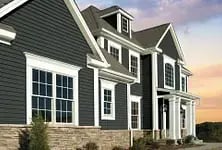
Vinyl siding is one of the most popular types of siding among homeowners for several good reasons. It offers a winning combination of durability, and low maintenance, at a low cost. Available in a wide range of colors and styles, vinyl siding can mimic the look of wood, stone, or even metal. Its resistance to rot, pests, and moisture makes it an excellent choice for regions with diverse weather conditions.
Pros of Vinyl Siding:
1. Cost-effective option: Vinyl siding is budget-friendly, making it an attractive choice for homeowners looking for quality protection without breaking the bank.
2. Low maintenance requirements: Unlike wood, which requires regular staining or painting, vinyl siding is virtually maintenance-free. A simple occasional cleaning is all that’s needed to keep your vinyl siding looking fresh.
3. Resistant to pests, rot, and moisture: Vinyl siding won’t succumb to termites, rot, or moisture damage, ensuring a long lifespan and minimal repair costs.
4. Versatile design options: With a plethora of colors, styles, and textures available, vinyl siding can match any architectural style, from classic to contemporary.
5. Long-lasting: Thanks to its durability, vinyl siding can endure the test of time, with many manufacturers offering warranties that span several decades.
However, it’s essential to note that vinyl siding is not without its drawbacks. While it provides excellent value for the cost, it may not have the same aesthetic appeal as some other siding options like wood or stone. Some homeowners also express concerns about the environmental impact due to plastic composition. However, recent advancements in vinyl manufacturing have led to more eco-friendly options, making it a more sustainable choice.
Chapter 2: Wood Siding
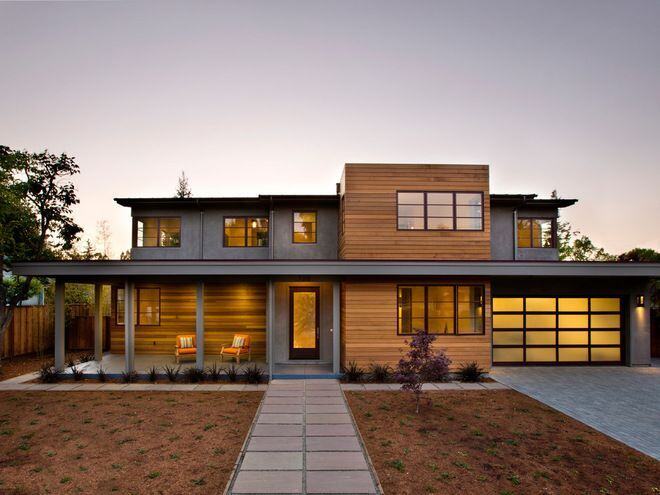
For a timeless, classic look, many homeowners opt for natural wood siding. This traditional siding material exudes natural beauty and warmth that can’t be replicated by other materials. Wood siding comes in various types, including cedar, redwood, and pine. While it adds character and charm to your home, it does require more maintenance than some other types of siding to keep it looking its best.
Pros of Wood Siding:
1. Aesthetic appeal and natural beauty: Wood siding’s warmth and authentic appearance can enhance the curb appeal of any home. It provides a cozy and inviting atmosphere that’s hard to match.
2. Environmentally friendly: Wood is a renewable resource, making it a sustainable choice for eco-conscious homeowners. When sourced responsibly, natural wood siding can have a minimal environmental impact.
3. Can be painted or stained for customization: Wood siding offers the freedom to change its color or finish, allowing homeowners to adapt their home’s look over time.
4. Excellent insulation properties: Wood siding can provide good thermal insulation, potentially lowering your energy bills by keeping your home cooler in the summer and warmer in the winter.
5. Long-lasting with proper maintenance: While natural wood siding may require more care than some alternatives, regular maintenance, such as sealing or painting, can extend its lifespan significantly.
However, wood siding does have its downsides. One significant drawback is its susceptibility to rot, pests, and moisture damage. Without proper maintenance, wood siding can deteriorate quickly, leading to costly repairs. Additionally, the initial cost of wood siding can be higher than that of vinyl or fiber cement, which may deter budget-conscious homeowners.
Chapter 3: Fiber Cement Siding
Fiber cement siding is known for its durability and versatility. Made from a combination of cement, sand, and cellulose fibers, this siding material offers exceptional resistance to fire, insects, and moisture. It can mimic the appearance of wood, stucco, or masonry, giving you the aesthetic flexibility you desire.
Pros of Fiber Cement Siding:
1. Exceptional durability and longevity: Fiber cement siding can withstand harsh weather conditions, including high winds, heavy rain, and extreme temperatures. It’s known for its long lifespan, often exceeding 50 years.
2. Low maintenance requirements: It is resistant to rot, pests, and moisture, reducing the need for frequent repairs or replacements.
3. Resistant to fire, pests, and moisture: Its resistance to fire is a significant advantage, providing added safety to your home. Additionally, it’s immune to termite infestations and won’t warp or swell due to moisture exposure.
4. Various styles and textures available: Whether you desire the look of wood, stucco, or masonry, fiber cement siding can replicate it convincingly. This versatility allows you to achieve your preferred architectural style.
5. Environmentally friendly: The siding is composed of sustainable materials and is non-toxic. It’s also recyclable, reducing its impact on the environment.
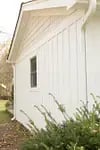
While fiber cement siding offers numerous benefits, it’s essential to consider some potential downsides or issues. One notable drawback is its weight; fiber cement siding is heavier than other materials, which can complicate the installation process. Additionally, cutting fiber cement can produce silica dust, which can be harmful when inhaled, necessitating safety precautions during installation or remodeling.
Chapter 4: Metal Siding
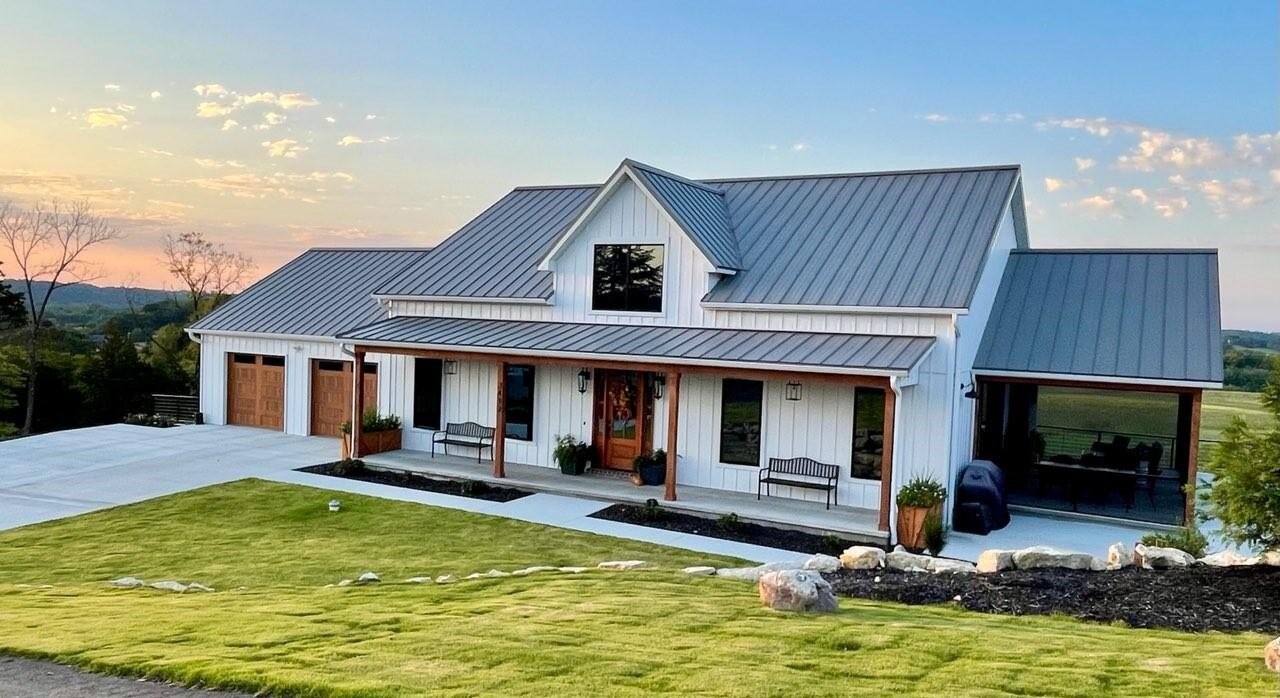
Metal siding is a modern and sleek option that is gaining popularity for both residential and commercial properties. Typically made from aluminum or steel, metal siding is lightweight and resistant to many environmental factors. It offers a contemporary, industrial look that can be appealing in various architectural styles.
Pros of Metal Siding:
1. Durable and resistant to weather: Metal siding can withstand extreme weather conditions, including heavy rain, snow, hail, and high winds. It won’t warp, rot, or corrode over time.
2. Low maintenance: With minimal upkeep required, metal siding can save you time and money on maintenance tasks like painting or staining.
3. Excellent energy efficiency: Metal siding reflects heat, helping to regulate your home’s temperature. This can result in reduced energy consumption and lower utility bills.
4. Modern and industrial aesthetics: If you’re looking to achieve a contemporary or industrial look, metal siding offers a sleek, minimalist appearance that can transform your home’s exterior.
5. Recyclable and environmentally friendly: Metal siding is highly recyclable, making it an eco-friendly choice. It’s often manufactured using recycled materials, further reducing its environmental impact.
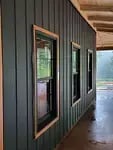
However, metal siding isn’t without its considerations. Some homeowners may find its industrial appearance less appealing than traditional or historic homes. Additionally, while metal siding is durable, it can dent if struck with force, which can be a concern in areas prone to heavy hailstorms. Proper installation and insulation are essential to prevent issues with noise or temperature regulation.
Chapter 5: Brick Siding
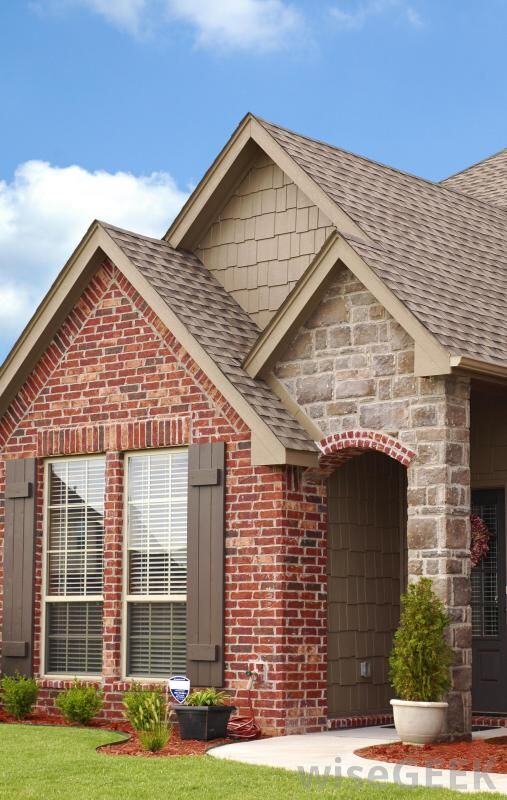
Brick house siding is renowned for its timeless elegance and longevity. While it may be more expensive upfront, it can last for generations with minimal maintenance. Brick offers exceptional thermal insulation, which can help reduce energy bills. It’s also resistant to pests and fire, making it a secure choice for your home.
Pros of Brick Siding:
1. Timeless and classic appearance: Brick siding provides a timeless and elegant look that adds sophistication to any architectural style.
2. Excellent durability and longevity: Brick is one of the most durable siding options available. It can last for centuries with minimal maintenance.
3. Superior thermal insulation: Brick provides excellent thermal insulation, helping to regulate your home’s temperature and potentially reducing heating and cooling costs.
5. Resistant to pests and fire: Brick is impervious to termites, and it offers a high level of fire resistance, contributing to your home’s safety.
However, brick siding does have some drawbacks to consider. One notable disadvantage is its initial cost, which can be higher than other siding options. The installation can also be more labor-intensive, which may increase installation costs and can be challenging to modify or update once it’s in place, so it’s essential to consider long-term design preferences.
Chapter 6: Stucco Siding
Stucco, with its textured and plaster-like finish, is a popular choice for Mediterranean and Spanish-style homes. It’s made from a mixture of cement, sand, and lime, creating a sturdy and long-lasting exterior, and providing excellent insulation, and is highly resistant to fire.
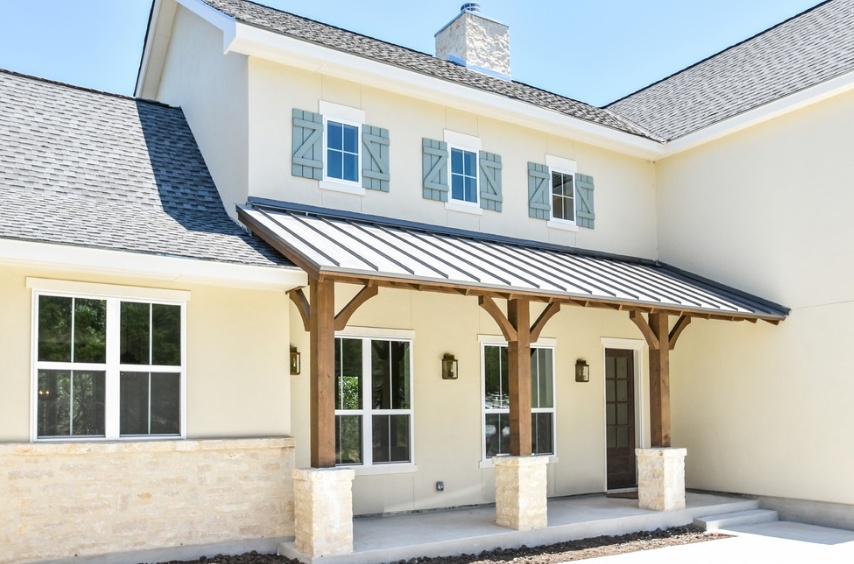
Pros of Stucco Siding:
1. Unique and textured appearance: Stucco offers a unique and textured appearance that can add character and charm to your home’s exterior.
2. Durable and long-lasting: Properly applied stucco can last for decades, making it a worthwhile investment.
3. Excellent insulation properties: It can provide superior thermal insulation, helping to regulate your home’s temperature and potentially reducing energy consumption.
4. Resistant to fire and pests: Stucco is fire-resistant and not susceptible to termite infestations, enhancing the safety and longevity of your home.
5. Minimal maintenance: Stucco requires minimal maintenance, typically limited to occasional cleaning to remove dirt or mildew.
While stucco has many advantages, it’s essential to be aware of some potential drawbacks. Stucco can be prone to cracking, especially in areas with significant temperature fluctuations. These cracks may require periodic repairs to maintain the siding’s integrity, making it unsuitable for all climates, as excessive moisture can lead to issues like efflorescence, where mineral deposits leach to the surface, causing discoloration.
Chapter 7: Stone Veneer Siding
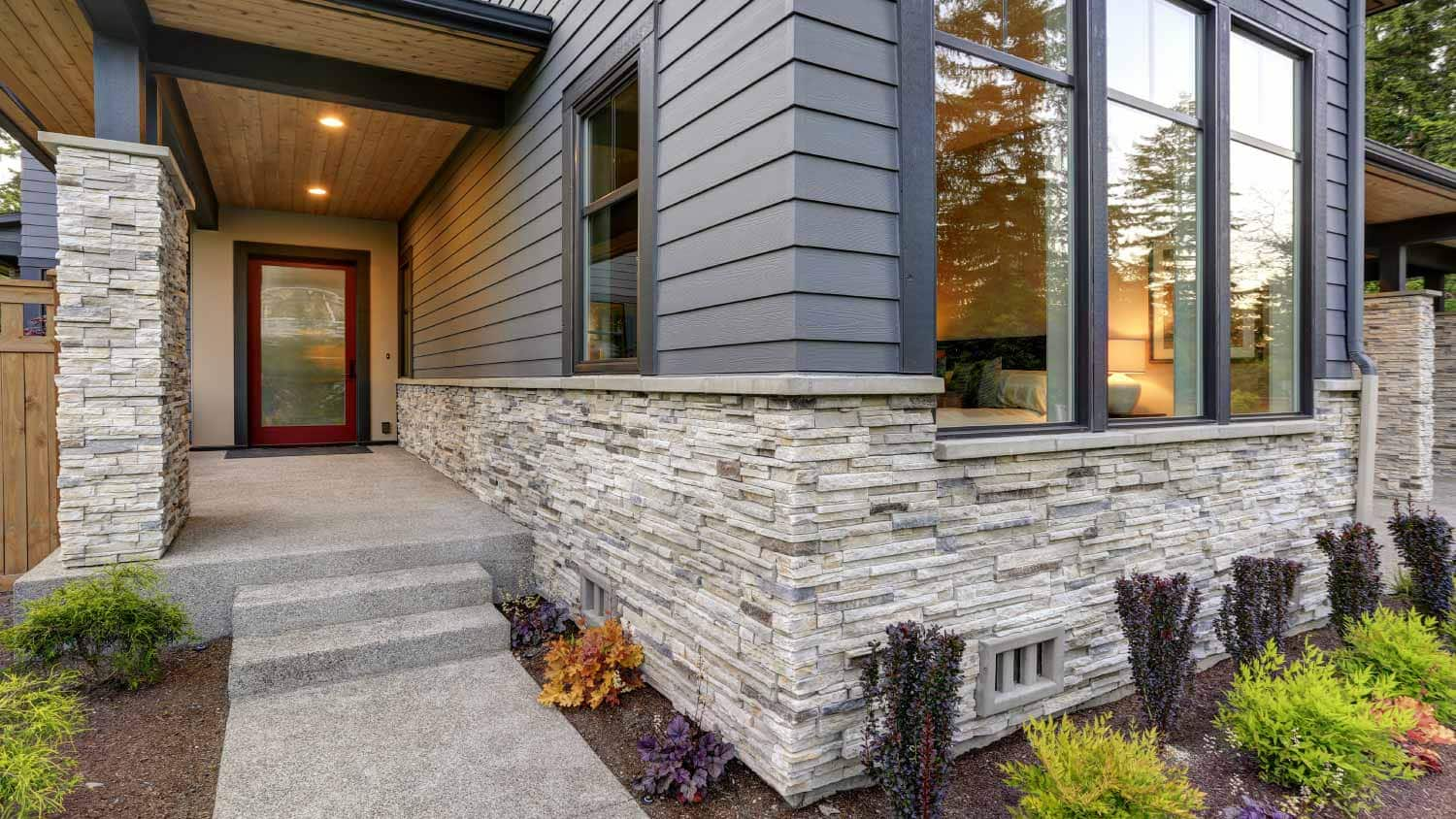
Stone veneer siding offers the luxurious appearance of natural stone without the heavy cost and installation challenges. Stone veneer can add a rustic and upscale to your home’s look while being more cost-effective than full stone siding.
Pros of Stone Veneer Siding:
1. Authentic natural stone appearance: Stone veneer siding captures the genuine beauty of stone, creating a luxurious and upscale look for your home.
2. Lightweight and easier to install than full stone: Unlike full stone siding, stone veneer is lightweight, making it easier and more cost-effective to install.
3. Durable and long-lasting: Stone veneer is highly durable and can withstand the test of time, providing a lasting investment for your home.
4. Resistant to pests and fire: Like natural stone, stone veneer is resistant to pests and fire, enhancing your home’s safety and longevity.
However, it’s important to note that stone veneer siding may not be suitable for all budgets, as it can still be more expensive than some other siding options. Additionally, while it captures the look of natural stone, it may not have the same authenticity as full-stone siding. Homeowners should carefully consider their budget when choosing stone veneer for their house siding.
Chapter 8: Composite Siding

This siding option is a relatively newer option on the market, and it offers a blend of benefits from various siding materials, like wood fibers, cement, and other additives. This option aims to provide the best of both worlds, combining the aesthetics of wood with the durability of cement or engineered wood.
Pros of Composite Siding:
1. Aesthetic versatility: It can mimic the appearance of natural wood, offering a traditional and attractive curb appeal.
2. Durability: It’s resistant to rot, insects, and moisture, ensuring a long lifespan for your siding.
3. Minimal maintenance: It typically requires less maintenance than natural wood, with no need for frequent painting or sealing.
4. Environmentally friendly: Many of the products use recycled materials, making them a more sustainable choice.
5. Customization options: It is available in various styles, textures, and colors, allowing homeowners to find the perfect match for their preferences.
However, like other siding materials, composite siding has its own considerations. Some products may be more expensive than traditional wood or vinyl siding, and the quality and durability can vary between manufacturers and products, so it’s essential to research and choose a reputable brand.
Chapter 9: Engineered Wood Siding
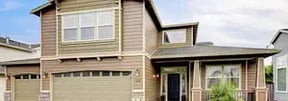
Engineered wood siding is a popular choice for homeowners who want the look of natural wood but with enhanced durability and lower maintenance requirements. It’s made by binding wood strands or fibers together with adhesive resins and then applying a protective overlay.
Pros of Engineered Wood Siding:
1. Aesthetic appeal: It closely resembles the look of real wood siding materials, providing a warm and inviting appearance.
2. Durability: It’s engineered to resist moisture, rot, and pests, ensuring longevity.
3. Low maintenance: The siding typically requires less maintenance than natural wood, with no need for frequent painting or staining.
4. Customization options: It’s available in various styles, textures, and finishes, allowing you to achieve your desired aesthetic.
5. Environmentally friendly: Many engineered wood siding products use sustainable wood sources and recycled materials.
However, it’s important to note that engineered wood siding can be vulnerable to moisture infiltration if not correctly installed or maintained. Professional installation and regular inspections are crucial to prevent issues such as swelling or delamination, and may still require periodic painting or staining to maintain its appearance, though less frequently than natural wood.
Chapter 10: Insulated Siding
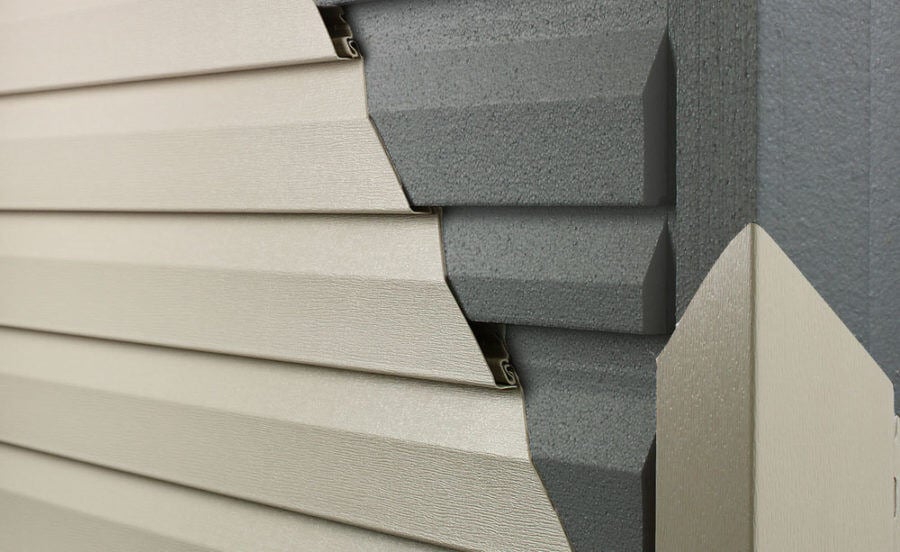
Insulated siding, also known as foam-backed siding, combines traditional house siding with a layer of insulating foam. This innovative approach not only enhances energy efficiency but also improves its durability.
Pros of Insulated Siding:
1. Enhanced energy efficiency: The insulating foam layer helps to regulate your home’s temperature, reducing energy consumption and lowering utility bills.
2. Durability: Insulated siding is resistant to impact, denting, and moisture, providing added protection for your home.
3. Noise reduction: The foam layer can help reduce exterior noise, creating a quieter and more comfortable indoor environment.
4. Low maintenance: Many insulated siding products require minimal maintenance, with no need for frequent painting or staining.
5. Aesthetic options: Insulated siding is available in various styles and colors, allowing you to match your desired aesthetic.
However, insulated siding can be more expensive than traditional siding materials due to its added insulation benefits. Installation may also require additional expertise to ensure the insulating foam layer is correctly integrated into your home’s exterior. Homeowners should consider the long-term energy savings and comfort benefits when evaluating the cost-effectiveness of insulated siding.
Chapter 11: Considerations for Siding Installation and Maintenance
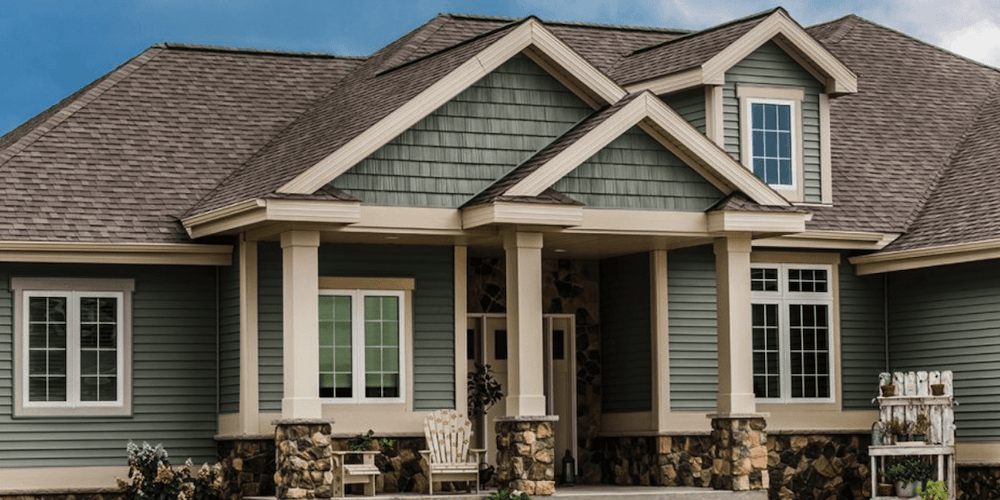
Choosing the right type of siding for your home is undoubtedly crucial, but it’s equally important to understand the installation and maintenance aspects associated with your selection. Proper installation and regular maintenance can significantly impact the performance and longevity of your siding, regardless of the material you choose.
Installation Considerations:
1. Professional Installation: While some homeowners may attempt to install siding themselves, it’s often best left to professionals. Experienced contractors have the necessary skills and tools to ensure a proper and secure installation. They can also identify and address any potential issues during the installation process.2. Weather Considerations: The climate in your region can affect the choice of siding and installation techniques. In areas with extreme weather conditions, such as heavy rainfall or severe winters, it’s essential to choose a siding option and installation method that can withstand these challenges. Proper moisture barrier installation and adequate insulation are crucial for weather-resistant siding.
3. Ventilation: Proper ventilation behind your siding is essential to prevent moisture buildup and ensure the longevity of your siding. Ventilation allows for the release of excess heat and humidity, which can otherwise lead to issues like mold or warping.

Maintenance Guidelines:
1. Regular Cleaning: Regardless of your siding material, regular cleaning is essential to prevent the buildup of dirt, grime, and mildew. A simple solution of water and mild detergent can often suffice for cleaning. For some materials like vinyl, a power washer set to a low pressure can be used, but exercise caution to avoid damage.
2. Painting and Staining: If you have wood siding or any other material that requires painting or staining, follow a regular maintenance schedule. This typically involves repainting or restaining every few years, depending on your climate and the quality of the previous application.
3. Sealing and Caulking: Check for gaps, cracks, or areas where the siding has pulled away from the structure. Seal and caulk these areas promptly to prevent moisture infiltration, which can lead to rot and other damage.
4. Inspections: Periodic inspections of your siding are essential to catch any issues early. Look for signs of damage, such as cracks, holes, or loose siding panels. Address these problems promptly to prevent further deterioration.
Conclusion
Choosing the right siding for your home is a decision that should not be taken lightly. Each type of siding material has its own unique set of advantages, and your choice will depend on factors such as budget, climate, maintenance preferences, and aesthetic preferences. Take the time to research and assess your specific needs, and consider consulting with a professional siding contractor to ensure you make an informed decision.
Whether you opt for the affordability and low maintenance of vinyl siding, the timeless beauty of wood, the durability of fiber cement, the modern aesthetics of metal, the elegance of brick, the Mediterranean charm of stucco, the luxury of stone veneer, the versatility of composite siding, the enhanced durability of engineered wood siding, or the energy efficiency of insulated siding, your choice of siding will not only protect your home but also enhance its visual appeal for years to come. Invest wisely, and you’ll enjoy the benefits of a beautiful and well-protected home.
In conclusion, when selecting the right siding for you, it’s crucial to weigh the pros and cons of each material against your specific needs and preferences. No single siding material is universally superior; instead, the best choice depends on your budget, climate, maintenance capabilities, and the aesthetic you want to achieve.





